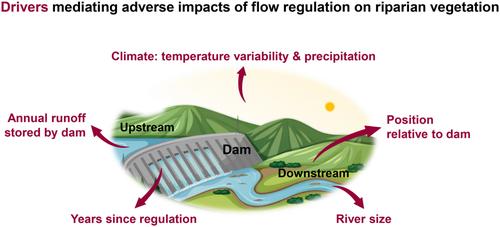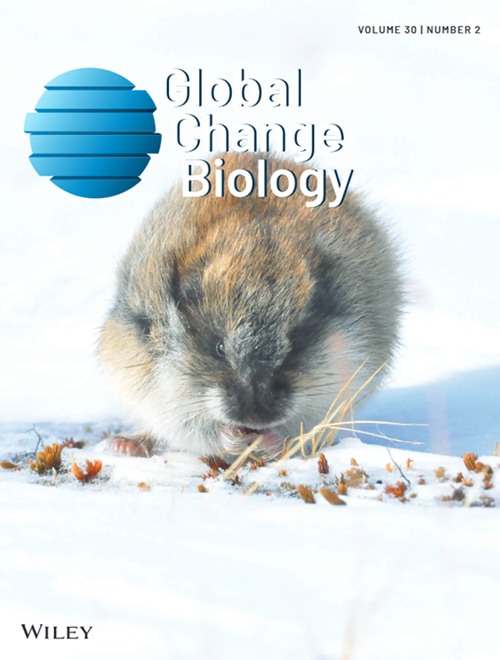Broad-Scale Meta-Analysis of Drivers Mediating Adverse Impacts of Flow Regulation on Riparian Vegetation
IF 10.8
1区 环境科学与生态学
Q1 BIODIVERSITY CONSERVATION
引用次数: 0
Abstract
Over two-thirds of global rivers are subjected to flow regulation. Although it is widely recognized that flow regulation can adversely affect riparian vegetation—a critical component of river ecosystems—the specific roles of various drivers remain poorly understood. To address this gap, we conducted a broad-scale meta-analysis, aiming to elucidate how different factors mediate the adverse impacts of flow regulation on riparian vegetation. This meta-analysis encompassed 59 papers, spanning 278 dams constructed on 146 rivers. We extracted data on four key indices of riparian vegetation: species richness and abundance of all riparian species, and those indices exclusively for non-native species. Indices were compared between regulated and free-flowing or pre-damming rivers to quantify the impact of flow regulation. Our meta-analysis revealed a moderate but significant reduction in the richness and abundance of all riparian species under flow regulation, coupled with a strong increase in the abundance of non-native species. Riparian vegetation in arid and continental climate regions experienced stronger negative impacts than those in tropical and temperate climates. Furthermore, the adverse effects on riparian vegetation were more pronounced downstream of dams than upstream. Considering climate region, study identity, and relative position to the dam as random variables, it became evident that years since flow regulation emerged as the most important factor influencing species richness. Over time, richness gradually recovered from initially low levels. However, this recovery was slowed by increasing flow regulation intensity (percentage of annual runoff stored). Additionally, the impact was more evident in larger rivers. To support regulated river management, we recommend prioritizing the protection of riparian vegetation in arid and continental climates, with emphasis on areas downstream of dams, limiting flow regulation intensity, particularly in larger rivers, and monitoring non-native species to prevent disproportionate spread.

求助全文
约1分钟内获得全文
求助全文
来源期刊

Global Change Biology
环境科学-环境科学
CiteScore
21.50
自引率
5.20%
发文量
497
审稿时长
3.3 months
期刊介绍:
Global Change Biology is an environmental change journal committed to shaping the future and addressing the world's most pressing challenges, including sustainability, climate change, environmental protection, food and water safety, and global health.
Dedicated to fostering a profound understanding of the impacts of global change on biological systems and offering innovative solutions, the journal publishes a diverse range of content, including primary research articles, technical advances, research reviews, reports, opinions, perspectives, commentaries, and letters. Starting with the 2024 volume, Global Change Biology will transition to an online-only format, enhancing accessibility and contributing to the evolution of scholarly communication.
 求助内容:
求助内容: 应助结果提醒方式:
应助结果提醒方式:


